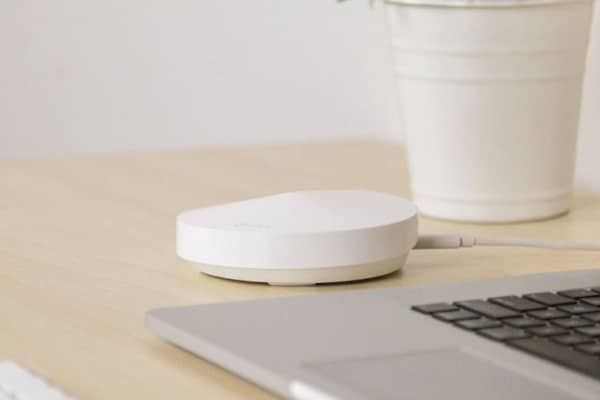Ever wondered how some top establishments allow you to access wi-fi anywhere on the campus? Now you can provide the same facility in your organisation too–at least within an area of 3000 to 6000 square feet. All thanks to a category of wi-fi routers called–Mesh Network WiFi routers.
What’s different?
Network Everywhere! The traditional stand-alone Wi-Fi routers gives you a hard time once you lose the connectivity as you go farther away from the router. On the contrary, mesh network creates a continuous wireless link within each access points establishing a link throughout your organization and reducing the possibility of dead zones.
Typically, you get a set of routers, in which the primary one is the base station while one to two more are satellites. Satellites extend the range of the base station across a larger area, by streaming data from the base station and streaming it to devices near them.
The cool thing about this setup is that the base station and satellites communicate with each other using RF signals and not wi-fi. Why’s that important? Because, using RF, the base station and the satellites can be setup in situations where a typical wi-fi setup would not work. For example, in heritage hotel buildings, the stone walls could block wi-fi, but not RF.
Expanded Coverage: Typical routers cover 1200-1500 square feet approximately, while the coverage area of a typical Mesh Network is 4,500 to 6,000 square feet.
More Devices: You can connect a much larger number of devices to same network, typically ranging from 20 to 90 devices depending on the router model and coverage area.
Reduced Wiring & Cabling: Wireless mesh automatically excludes the extra cost of wires, installation of fibre cables, long wires in the buildings, societies and most importantly in the offices.
Expandable and adaptable: Being ‘wireless’ in nature, Wireless mesh nodes can be moved or removed depending on the location where you are installing.
COMPARISON CHART
Here’s a comparison of some of the popularly available devices in India, along with parameters that matters
|
Sl No.
|
Make and Model
|
Coverage Area in Square Feet
|
Speed
|
Number of Clients/Device |
Number Untis (Base+Satellites)
|
Price (Approximate)
|
| Supported | ||||||
| 1 | Linksys WHW0303 | 6000+ | 802.11ac (AC1300 x 3) |
64 | 1+2 | 24000 |
| 2 | Google Wifi system | 4500 | 802.11ac (AC1200) | 64 | 1+2 | 48,000/- |
| 3 | NetgearOrbi Pro AC3000 Tri-band WiFi System (SRK60 | 5000 | 802.11ac (AC3000) | 40 | 1+2 | 34,380/- |
| 4 | Netgear Orbi RBK50 | 4500 | 802.11ac (AC3000) | 40 | 1+1 | 24,999/- |
| 5 | Tenda Nova MW6 | 6000 | 802.11ac (AC1200) | 90 | 1+2 | 26,590/- |
| 6 | Samsung Connect Home AC1300 Smart Wi-Fi System | 1500 | 802.11ac | 20 | 1 | 14,009/- |
| 7 | TP-Link Deco M5 | 4500 | 802.11ac (AC1300) | 64 | 1+2 | 16,349/- |
Specs Explained
- Speed: That’s denoted by the number coming after AC, which shows the maximum theoretical bandwidth of the setup. 1200 means 1200 Mbps, 1300 means 1300 Mbps, 3000 means 3000 Mbps. A major alert would be that you should NOT just go by what the vendors put on their data sheets.
- Number of clients: This figure represents how many devices can connect to wi-fi using that particular model. For example, ’40’ here would mean that as per the manufacturer their setup can handle 40 devices without any issue.
- Number of Units: This parameter informs you about the setup configuration, or put simply, number of satellites you will get with the base station. For example, ‘1+2’ means 1 base station along with 2 satellites.
Bottomline
The important factor to notice is that your work is reduced since you are saved from the hassles of managing different routers, security setups, logins, etc. An investment in a mesh router setup will not only provide you the above-mentioned advantages, but the resulting reduction of hassles faced by your users will make you look like the super IT guy.
















































































